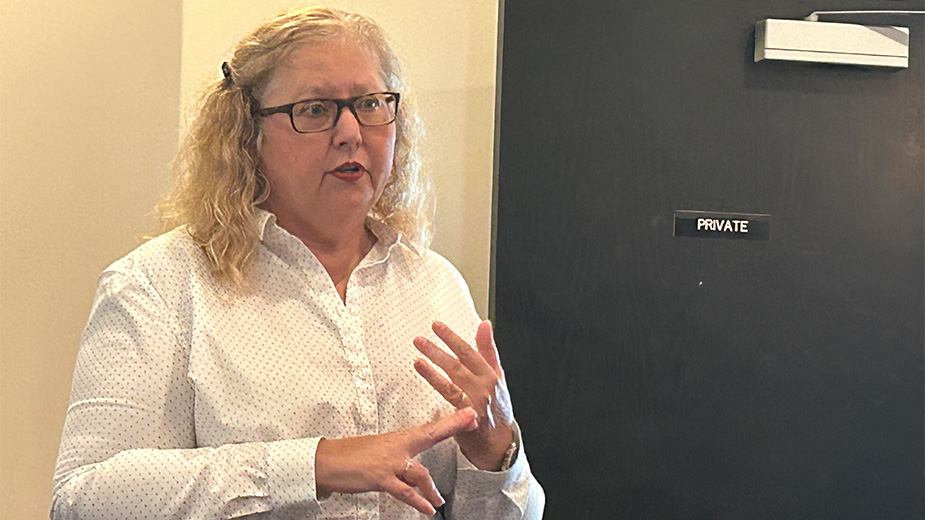It’s Only $500. But It Sure Adds Up.
YOUNGSTOWN, Ohio – At first blush, putting an extra $500 away for your retirement might not seem like much, but financial professionals say it could make a bigger difference than you think once it comes time to retire.
“Every dollar you can save is meaningful,” says Stephen Strayer, vice president and market director of the institutional asset management group of PNC Bank. “If you have a young individual who’s age 25 and saves $500 a year until they reach age 65 at a 7% interest over those 40 years, [it] would be worth close to $100,000.”
Because of inflation, the IRS this year increased by $500 the maximum contribution levels that an individual can put away in both his 401(k) and Individual Retirement Account.
Now, the maximum annual contribution for a 401(k) plan is $19,000, up from $18,500 last year, while IRA contributions have increased to $6,000, up from $5,500.
Contribution levels for a 401(k) have increased $500 annually over the last two years, whereas IRA contributions last increased in 2013.
“The limits used to increase annually based on whatever inflation was, although it created off numbers. So until the level of inflation increases significantly to make that $500 jump, they stay the same,” Strayer says.
For example, the 401(k) limit was $8,994 in 1993, he says. The IRS had the tax code changed to adjust that, so it could increase only in $500 increments and the number would need to end in an even thousand or $500 number. In 1996, the limit increased to $9,500 from $9,240 and it has increased only in such increments since.
As for people over 50, they can save an extra $1,000 for a total of $7,000 in their IRAs and an extra $6,000 in catch-up contributions to their 401(k) this year. This means older employees can contribute as much as $25,000 this year.
“Every dollar that one can put away towards retirement that would fit within their budget can have the ability to condition yourself to be better prepared for retirement, and have a more comfortable retirement and potentially an earlier retirement,” Strayer says.
As people are expecting to live longer in the United States because of technology and advances in medicine, putting away extra money is a sound practice. According to the World Bank, in 2017, the average life expectancy in the United States was 78.6, compared to 69.77 in 1960.
Today, many people rely on Social Security for retirement. An August 2018 report from The Center of Budget and Policy Priorities states that Social Security provides about half of the annual income for seniors and for about one in five seniors, it provides at least 90% of their income.
Without Social Security benefits, about four in 10 Americans age 65 and older would have incomes below the poverty line.
Rich Morrow, principal and senior financial adviser at HBKS Wealth Advisors, says this is a concern, because it’s important for someone to take personal responsibility for saving for his retirement with the advantage of a 401(k) or IRA.
“Social Security was designed to be a safety net, but so many people today plan on using that exclusively for retirement,” Morrow says. “Taking advantage of these plans today, especially the younger that you are, the more powerful and meaningful these numbers can be.”
The average balance Fidelity Investments reported in its 401(k) plans reached a record high of $106,500 in the third quarter of 2018 for its 30 million holders. The number of people with $1 million or more in their retirement accounts rose to more than 187,000.
The average IRA balance also hit a record, climbing to $111,000, more than double the $52,000 balance from the third quarter of 2008.
It’s never too late to change how much you contribute to your retirement plan if you would like to increase your contributions to the maximum yearly allowance, Morrow says. “If you’re thinking about these newer numbers for 2019, people have from now through Dec. 31 for a 401(k) and all the way to April 15, 2020, for an IRA,” he says.
So how can you save that extra $500 a year? It’s simple, the advisers say, especially if the number is broken down: saving $500 per year is the same as setting aside $10 a week.
Morrow says there are many subtle ways to save for retirement. “You think about your favorite coffee house, perhaps, and how much we tend to spend on coffee on a daily basis,” he says. “It can be as simple as forgoing your favorite coffee drink once or twice a week to come up with the extra $50 a month to get to that goal.”
Adds Natalie Lariccia of the Sydney Jones Group of the Merrill Lynch office in Canfield “Little things add up. Five dollars here or $5 there and that can be money that you save for your future.”
The wealth management adviser at Merrill Lynch in Canfield gives some tips for saving the extra money: “Try packing your lunch instead of eating out. It’s healthier financially and physically,” Lariccia says. “Check your cell phone or cable bill if you’re being billed for services you’re not using. Use these little savings opportunities to put into your 401(k) or IRA.”
There is no magic number for how much each person needs to save to retire in comfort, Lariccia says.
“The number for you may be different from my number,” she continues. “It really depends on the person, their individual goals and what they’ve already saved and what they want to do later on.”
The best thing someone can do to prepare himself for retirement is, “getting the knowledge around what you can do to save for your retirement,” she says. This may include working with a financial adviser or planner to help you navigate and determine a path to your ideal retirement circumstance.
“Thinking about that future is what’s really important,” Lariccia says. “And taking advantage of vehicles out there that are there for your savings.”
Copyright 2024 The Business Journal, Youngstown, Ohio.


